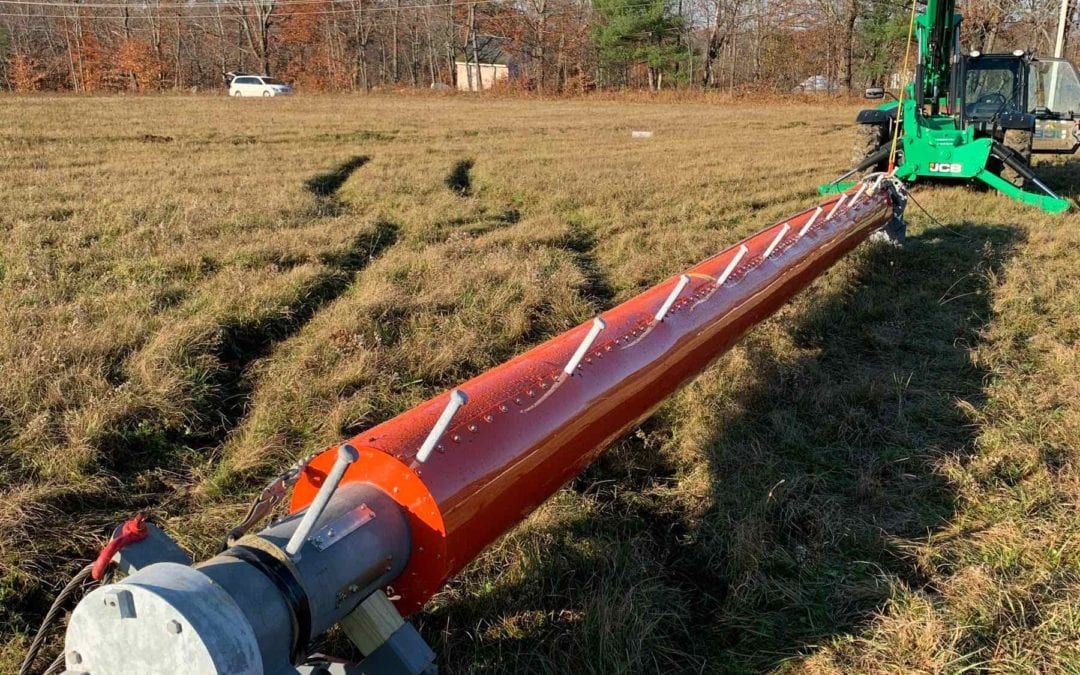Complete solution includes main and auxiliary antennas and a new filter; WMEA-DT will triple power output on new UHF Channel 36 assignment to better serve the Portland region
Dielectric’s dominant position as the broadcast industry’s leading supplier of repack antennas continues, with the company already preparing shipments and installations for the final high-power phases. These include three Phase 8 projects for early 2020 in its home state of Maine, with one installation for WMEA-DT, a Maine Public Broadcasting Corporation (Maine Public) station, now completed and ready for air.
Maine Public Television exclusively uses Dielectric antennas for its seven local stations, which deliver over-the-air PBS broadcasts through much of the state. The southernmost station, WMEA-DT in Biddeford, has been repacked from UHF Channel 45 to Channel 36 in Phase 8, with switchover scheduled for March 11th. In addition to preparing WMEA for a new channel assignment, Dielectric was also tasked with providing a system that would accommodate a large power increase – nearly triple the station’s TPO on Channel 45.
“We petitioned the FCC to maximize our coverage, and they authorized an increase from 50,000 to 149,000 Watts on Channel 36,” said Jeffrey Mahaney, Chief Technology Officer for Maine Public. “That increase will drastically strengthen our over-the-air signal in southern Maine, which includes our goal of improving coverage to the city of Portland.”
Mahaney worked with Dielectric engineers to design an antenna system that leveraged the same directional pattern on a different frequency. “Without an exact duplication, we would have been forced to undergo a series of FCC filings and permissions, or reduce our power to avoid exceeding the protected signal contour,” he said. “Dielectric worked diligently to ensure that we could remain in compliance while increasing our power.”
With the snowy Maine winters in mind, the Dielectric team accelerated the design process to accommodate a November installation. That required an early removal of WMEA’s top-mounted Channel 45 antenna. To ensure continuous broadcasting, WMEA purchased Dielectric’s TLP-12E side-mounted auxiliary antenna, which will serve as a temporary Channel 45 system through March 11th. Dielectric design engineers once again duplicated the existing directional antenna pattern to maintain FCC compliance and consistent service to viewers.
On March 11th, WMEA will switch to its new permanent, higher-power Dielectric TFU Series UHF end-fed antenna, with Vertical polarization added for improved reception, which the station begins testing this week. The antenna was installed at a height of 600 feet via a helicopter lift, and connected to existing Dielectric digiTLine™ rigid transmission line that was re-usable for Channel 36. WMEA additionally installed a new Dielectric mask filter to serve Channel 36, along with a new transmitter.
“Dielectric’s new filter designs are ceiling-mounted and much smaller than the previous generation filters; and the new Channel 36 filter has freed up a lot of space that the old system occupied,” said Mahaney. “The consistency of Dielectric filters is what really matters. We have no question that this filter will prevent our signal from inadvertently bleeding into adjacent frequencies. Their designs keep the signal within frequency without fail.”
Mahaney shares the same sentiments around robust engineering and consistent operation with Dielectric’s antennas. The top-mounted TFU design is equipped with a non-pressurized, protective radome for Maine’s harsh weather elements.
“Dielectric antennas are rugged and very professionally engineered, and that strength and robustness equates to longevity,” said Mahaney. “We never have to worry about Dielectric antennas becoming a maintenance headache. I suspect this antenna will be up there for 40 years without being touched.”

